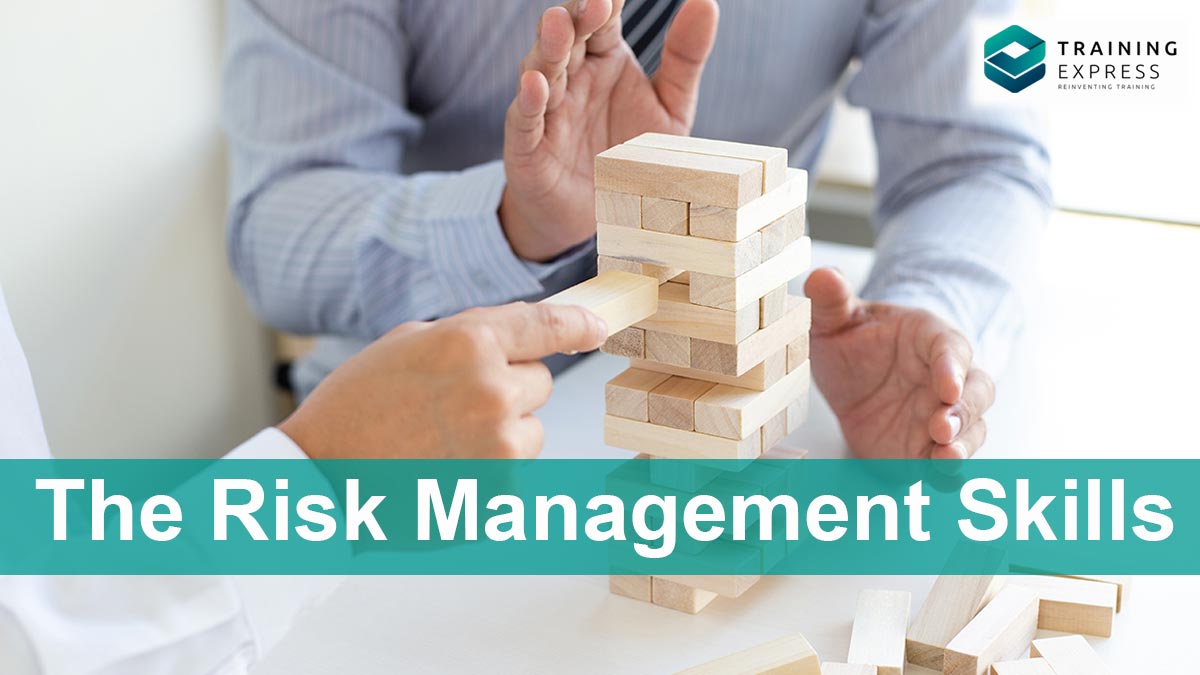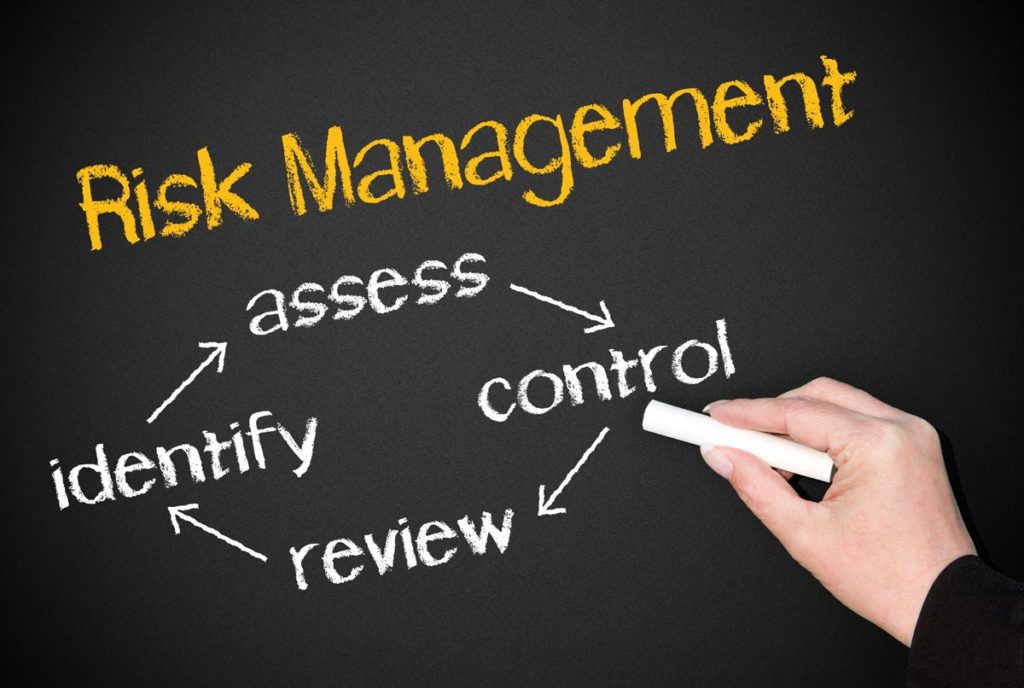

In general, risk means uncertainty. All organizations face some sort of risks. These risks relate to their chances of success. So better understanding and effective management of risks can increase the chances of success. Capable risk management skills allow you to take the full advantages of these situations. To clarify, adapting well to these circumstances and can bring your company long term success.
Most people associate risks with bad things. But this view lacks the whole picture. This is a tradeoff between an opportunity and the uncertainty surrounding it. Bad things can and do always happen. But so do good things. Within any uncertainty, there is an opportunity. It can either go down as something good or a bad thing happening.
For example in a game of football when a team goes into the opposition half to score a goal. They try to create chances by taking the ball as close to the opposition post as possible. But if they lose the ball they are at the risk of getting caught off guard with fewer men defending their own post.
This is exactly how the risk management process fits into your real life. You have to identify the risks and control the measures of bad things that can happen. Emphasize on the positive outcomes and get the best outcomes with effective management skills. Corporations have to push for productive outcomes. At the same time, they also have to watch out for negative outcomes.
In this blog you will learn
What is risk?
Companies face the challenge to meet a lot of external and internal factors to operate. This make it uncertain whether the company will reach its desired goal or not. In short, risks are these events and conditions.
From the very beginning, we always had a preconceived mindset that a risk is something negative. But to be honest the result of risk is not always negative. Risks are uncertain events. They can lead to both negative and positive outcomes.
Positive risks are synonymous to opportunities. Risk managers are always seeking to make the best of these opportunities. Subsequently, a business creates value by controlling something that has the potential to cause harm
What is risk management?

In risk management, firstly you identify the hazards that may occur while operating an enterprise. Secondly, you make a risk assessment to identify which risks are more critical and which are less. Risk assessment is an effort to identify events that may impact your business negatively.
Finally, based on those assessments you have to focus on the risks one over another. With your limited time and resources, you can only emphasize a few. You to fix your priority in such a way that the smaller risks gets absorbed by the system.
As you already know a risk can be both negative and positive. Consequently, the purpose of risk management is to minimize the negative risks. They are to ‘be monitored’ from time to time to keep them under control.
Meanwhile, there are positive risks or opportunities as we may call them. Companies put their valuable resources on the line to make the most out of these opportunities. These are the key considerations for the risk management process.
Organizations spend their limited resources on opportunities to create value. They risk their resources from running out before they can achieve any return. So resources are spent systematically. To sum up, this is an integral part of organizations activities to attain growth.
As the organization grows the type of risk and challenges also change. So it is also a key role of organizations to keep updating and improving their risk management processes.
What is Risk management Framework?
The risk management framework is a sequential process. This is a design to cut and control the risks within an organization. There are 5 key steps of an enterprise risk management framework these are
Establish the context
This means rating the external and internal factors of an organization’s risks. From an external perspective, you will need to consider
1. Current economic environment
2. Future economic environment.
Other external factors are
1. Competition,
2. Political upheaval
3. Regulatory upheaval.
These can also influence the organization’s operations. This is where PEST analysis and Five force analysis can be useful.
The elements of internal environment of an organization are:
- Functional currency
- Operations
- strategy
- Stakeholder expectations
The culture of the organisation to take up and withstand risks should also be a part of the assessment.
Identify risk Exposures
The source of organisational risks are mainly the borrowing and investments of the organisation. These types of risks are to be specially dealt with. It’s because the vulnerability of risks fluctuates with the change of interest rates and market.
Like wise, Time management is also a vital parameter to assess these risks for companies with limited resources. Mismatched timings of return on investments can create an imbalance in future investments. Subsequently, it may cause overstretching of loan payments.
Analysis of risk
This step involves understanding the nature of the risk. It’s done by detecting the most likely actual exposures. Risk is quantified by multiplying the probability of occurrence of the risk with its potential losses.
Businesses divide risks into two categories such as:
- Pure risk: Pure risks are one that is beyond anyone’s controls. For example, natural disasters and sudden untimely deaths.
- Speculative risk: These risks are related to default on debt and credit risks. Effective Financial risk management is a basic to handle soch risks. So its obligatory for organisations to make the best use of their resources.
- Evaluate risks: Organisations exposures to risk depend on their resource and operating environment. Evaluating the risks this way prioritises the risks in 3 groups
- Regular high-level review
- Immediate action to reduce exposure
- Ongoing close monitoring
- Treat risks: Risks are treated based on the severity of consequences. Some Risks may be passed on to third parties. For example,insurance companies. Companies make periodic payments to insurance companies to secure their risks. Other risks are mitigated by acting on the source of the risk and decreasing the likelihood of its occurrence.
Risks are very important for companies. So is the power to handle risks. Companies create value by withstanding against risks.

Risk management skills for a smart manager
Constant change is the only norm in today’s market. As a result, speculations are changing. Companies are evolving every now and then. To clarify, risk management is now almost everybody’s business. In the ever-changing business landscape All employees are hired to face or balance a certain risk. A few skills of a smart risk manager are as follows
1. Industry and market knowledge
Ideal risk managers are always up to date with the industry and its market. Risk managers should also be aware of how the market has evolved in the past to its present stage. This will help him keep up with the changing trend and catch the trend before anybody else. In other words, this will enable him to take newer risks before anybody else. Consequently, this will set the trend before everyone else.
2. Ability to make decisions and work under stress
Situations change with no warnings. It happens without anyone even anticipating. So your business continuity plan makes the difference when anything goes wrong. Facing the dilemma of decision making of your organisation by staying calm is a priceless skill at times of stress.
3. Good understanding of finances
Finances are the backbone of all businesses. Risk is calculated in numbers. So being good with numbers is the prerequisite of being able to handle risks. Therefore to be good at risk management you need to be comfortable handling crazy huge numbers. Risk managers prioritieze quantitative risk among all types other risks. To clarify, It is done based on priorities keeping in mind the company’s scarce resource and time.
4. Ability to communicate and negotiate with people
Good interpersonal skills form the base of all modern jobs. Managers work as a team while operating. Therefore It is expected from him to keep his teammates cheered up and motivated.
In addition, he is also responsible for conveying complex financial and risk management terms to his teammates. So very active communication skills are mandatory for risk managers to be successful.

5. Strategic thinker and problem solver
A risk manager may find himself in a variety of scenarios. This is where he has to break free of the element of risk and achieve the desired goal of the corporation. Therefore problem solving and efficient risk management is one of the main places where corporations invest. Employees are mainly problem solvers. With their power of strategic thinking they face and overcome the risk factor. As a result companies achieve the desired goal.
6. Good understanding of the technical sides of the business
This is a must have skill for risk managers and business leaders. Technical understanding ensures proper management and perfect leadership skills in an organisation. Therefore technical knowledge is absolutely a must for solving problems related to risks of the business.
How corporations handle risks
Companies follow certain tactics to minimize and avoid financial losses. Everyone hired by corporations are risk managers. For Instance executives, line managers, middle managers and all other employees perform practices to prevent certain exposure to loss. Their main purpose is to mitigate loss and promote profit.
A method the companies give priority is to protect the investment of their shareholders. Managers protect the investment as company assets. This continues until the return starts to flow in.
To prevent financial losses corporations abide by a number of speculations. Risk managers calculate the probability of certain situations happening from the risk register. This is a very important part of qualitative risk analysis. Companies also seek third party insurance for unfortunate events such as injuries, natural hazards and damaged mechinaries.
Companies also invest in unrelated sectors, stocks and securities to mitigate loss from their own business. A good management follows various unconventional methods to fight off uncertain events in the market.
How to improve the risk management skills
Pest analysis
All organisations need to adapt to the environments they operate in. These include the climate, laws, lifestyle trends etc. If you can anticipate these factors you will find it teasyer to seize opportunities. As a result you will be able avoid potential threats. PEST analysis is a simple 4 point framework you can use to access the situations:
- Political: A change in the political environment can bring changes to legislation and taxation laws. Therefore, being able to anticipate such changes in government policies will be profitable for your business.
- Economic: The trends of the market, economy and how they are evolving is a major factor for any business. So the complete layout of the business has to be set by the condition of the economy. This includes marketing, production to pricing everything.
- Socio cultural: changes in the demography of the population and changing social and cultural values are also a major player that regulates the market. It's necessary to assess their effects as they can impact a business in many ways.
- Technological: Keep an eye out for new technology. Certain new inventions can affect your business and even replace your product.
Five force model
The ability of a corporation to profit depends on their position in the market. Porter’s five force model is used to discover who has the most power in a given situation. In addition it justifies whether the product is likely to profit or not.
Let’s look at each of them individually
- Supplier power: This means how easily your business can source raw materials. If prices are too high you are likely to look for another supplier. If your options are limited the power is on the suppliers hand.
- Buyer power:If you have lots of buyers you can control the market. Consequently, If you have few they control you.
- Competitive rivalry: In a market competition matters a great deal. If you have rivals with the same product in a market you have to seek an advantage over your rival. IN other words, getting an upper hand on price and quality wise can set your business a class apart. This is why it's important to have rivals.
- Threat of substitution: You need to keep in mind how easy it is for customers to choose a substitute over your product. The more likely the chances the less power you have in the market. So always try to upgrade the product and service to keep the business running in full flow.
- Threat of new entry: You also have to identify how likely a new competitor can enter your market. After that, you can plan future upgrades.
Each of the above factors can work with or against you. So correctly assessing them will enable you to forecast the production, operation and market risks of your business.
The above mentioned are the powerful parameters to assess a business environment. In conclusion,these factors are used to guide a business and brainstorm to eliminate threats.
How risk management improves organization performance
Traditionally risk management was considered to be a means to eliminate negative outcomes of a company. But nowadays risk management has gone beyond just fulfilling this purpose. nowadays companies use risk management to control many market factors which are out of management’s control to get improved outcomes from certain situations.
Companies are now exploiting the opportunity of the positive relationship between total risk management and the company performance. So companies which have invested more on intellectual capital are getting better outcomes on performances.
Why risk management is important
Without proper risk management outlines a business cannot possibly define its objective. The whole reason behind risk management is to make sure the company can face all the trouble it faces while operating. So identifying future situations and being prepared for them will help organisations get over unexpected situations with minimum costs. This is the advantage of risk management.
The job of a risk manager is a rewarding one. The risk manager plays a crucial role in the whole organisational function. So he has to cooperate with all other departments. As a risk manager you will have to face turbulent financial situations and deal with a lot of challenges. By all respects it is one of the most respected positions in an organisation.
Learn More
- Available Courses
- Career Bundles73
- Animal care5
- Law8
- Quality Licence Scheme Endorsed111
- Teaching13
- Teaching & Academics Primary27
- Accounting & Finance Primary30
- Training3
- Design9
- IT & Software44
- Healthcare126
- Marketing31
- Health and Safety402
- Construction48
- Electronics25
- Hospitality22
- Health and Social Care219
- Child Psychology37
- Management377
- Business Skills268
- First Aid70
- Employability264
- Safeguarding75
- Food Hygiene103
- Personal Development1277
 Food Hygiene
Food Hygiene Health & Safety
Health & Safety Safeguarding
Safeguarding First Aid
First Aid Business Skills
Business Skills Personal Development
Personal Development












